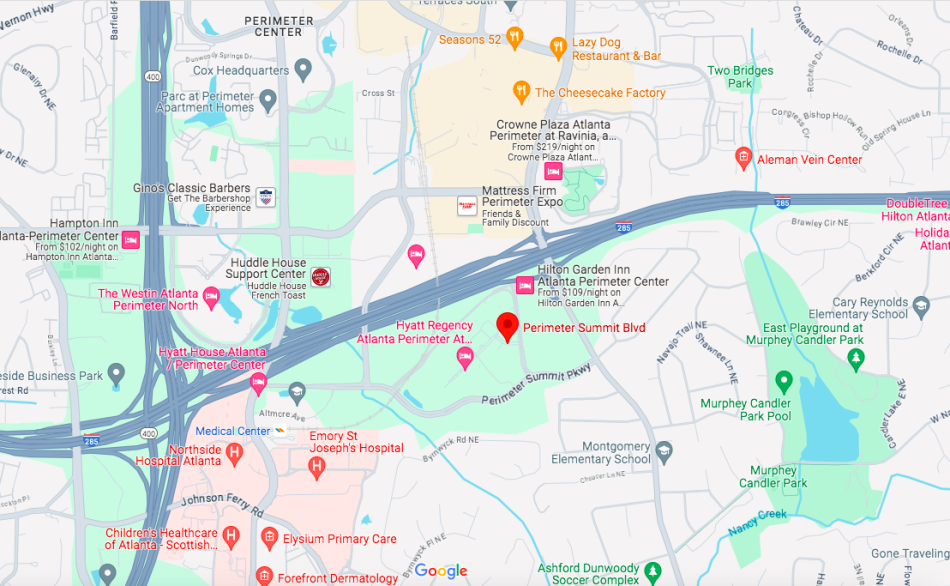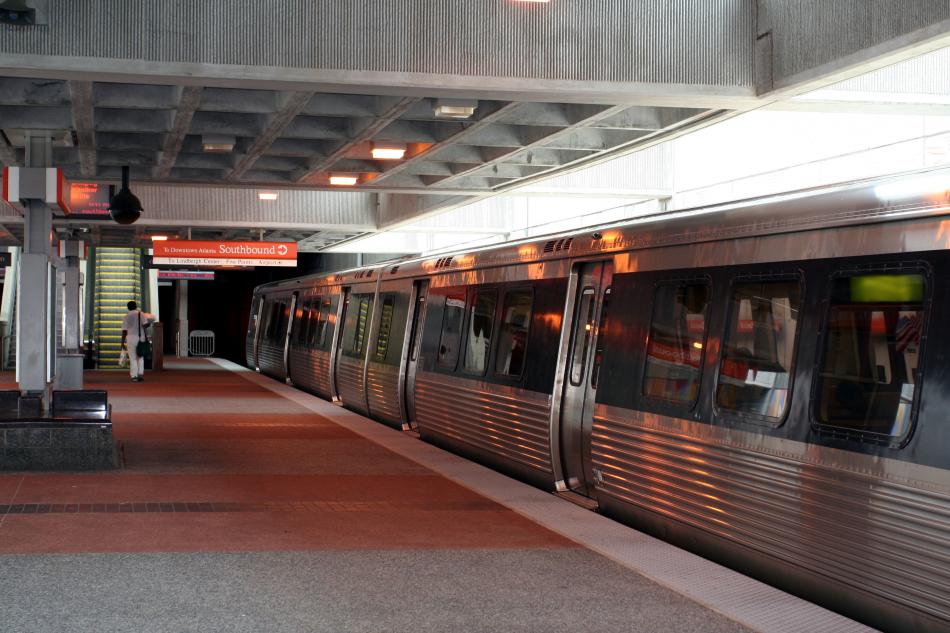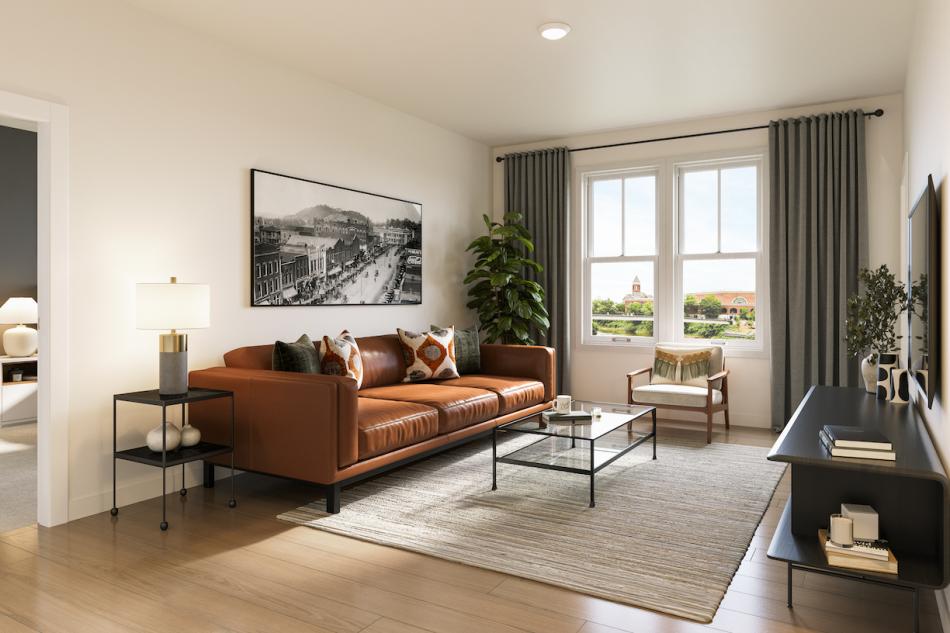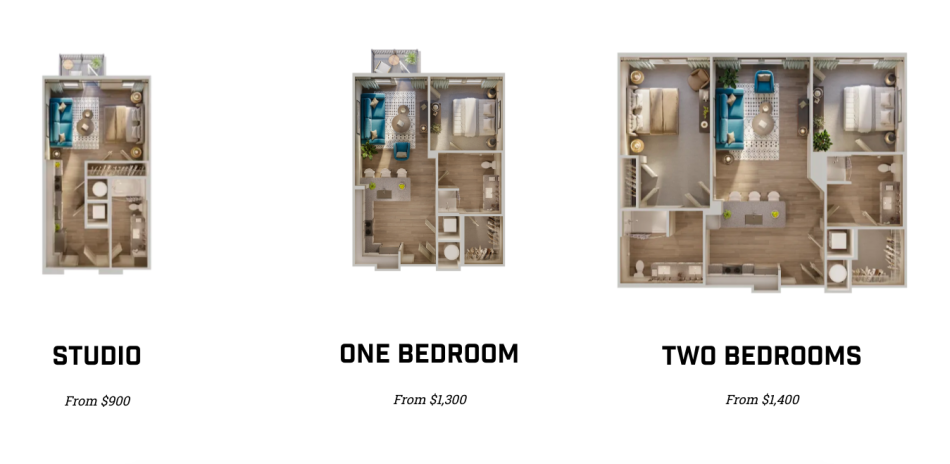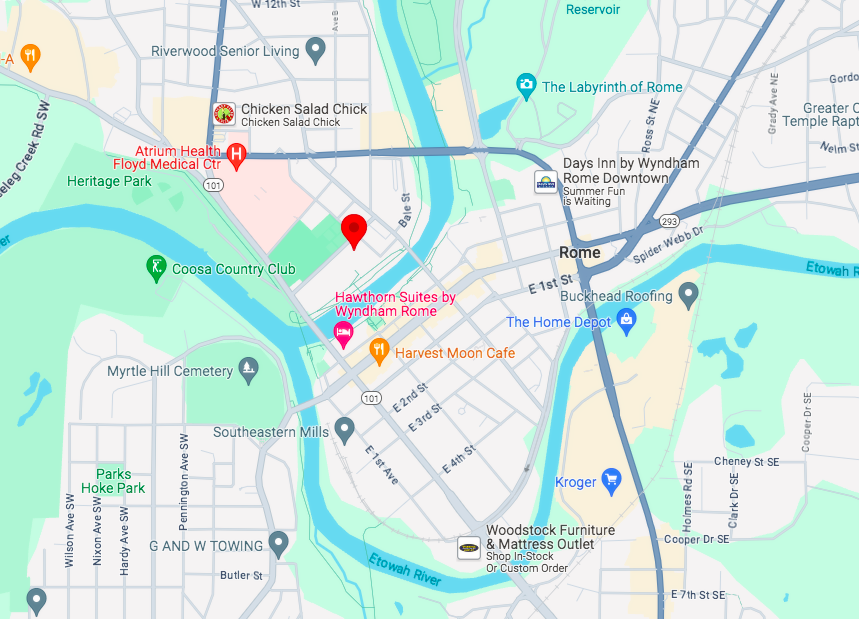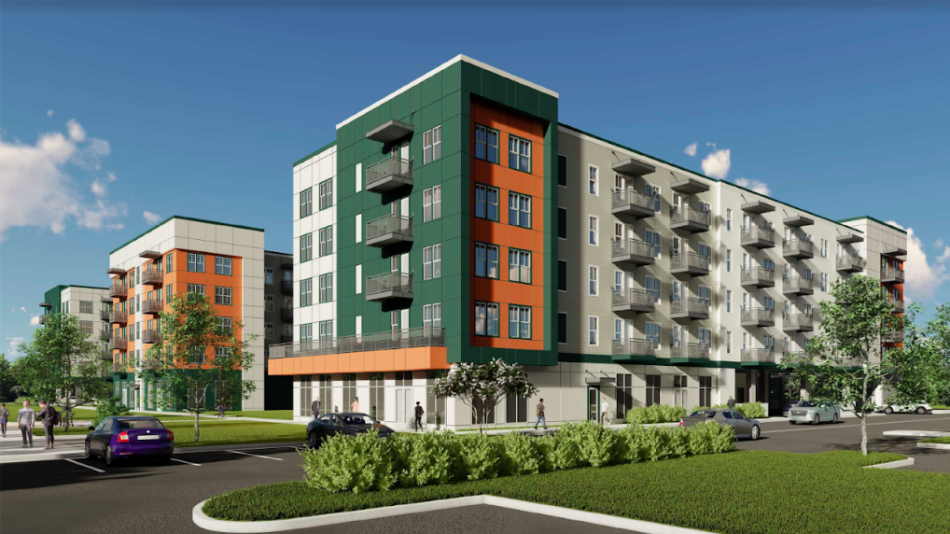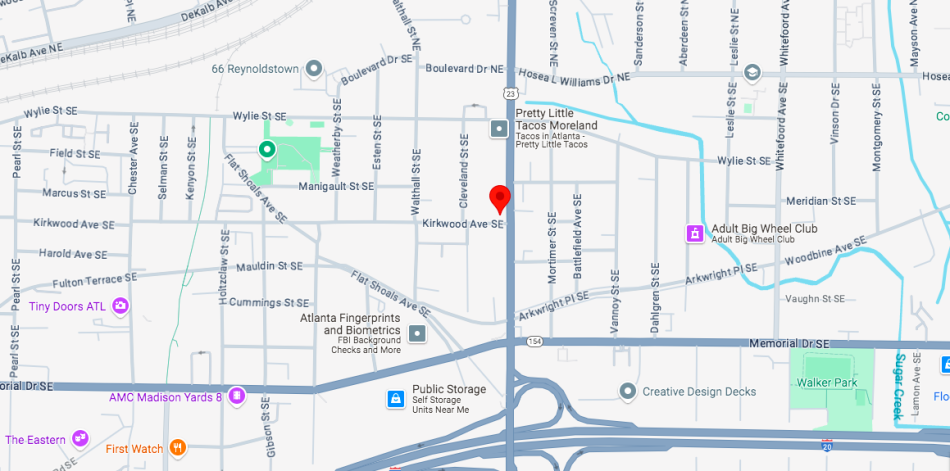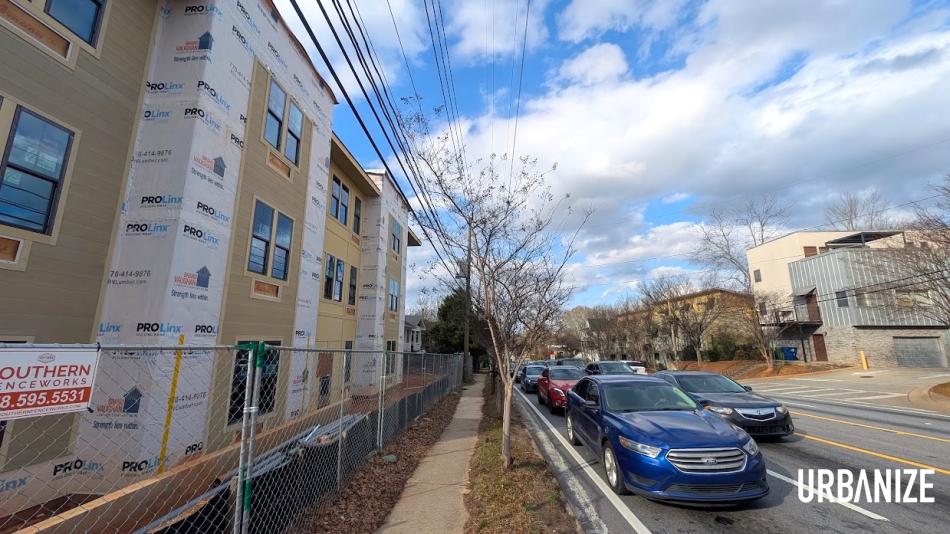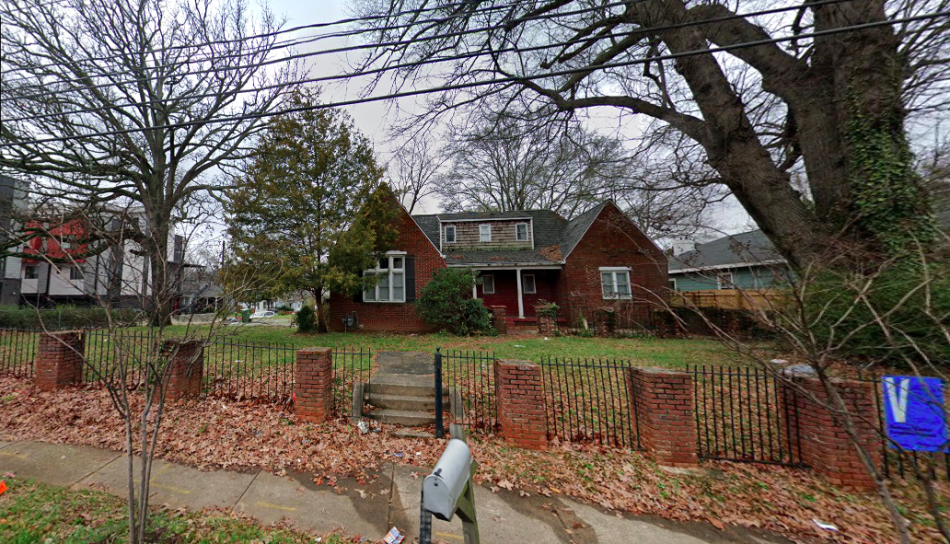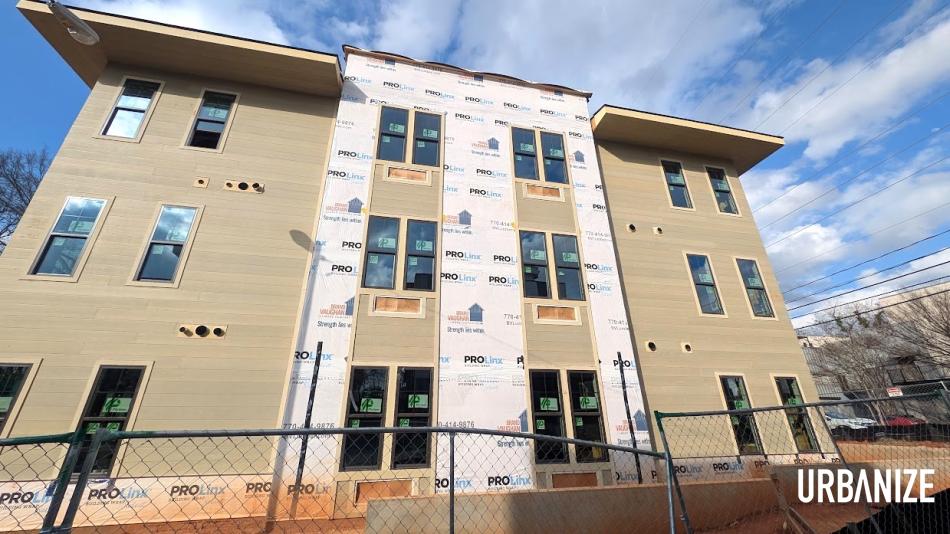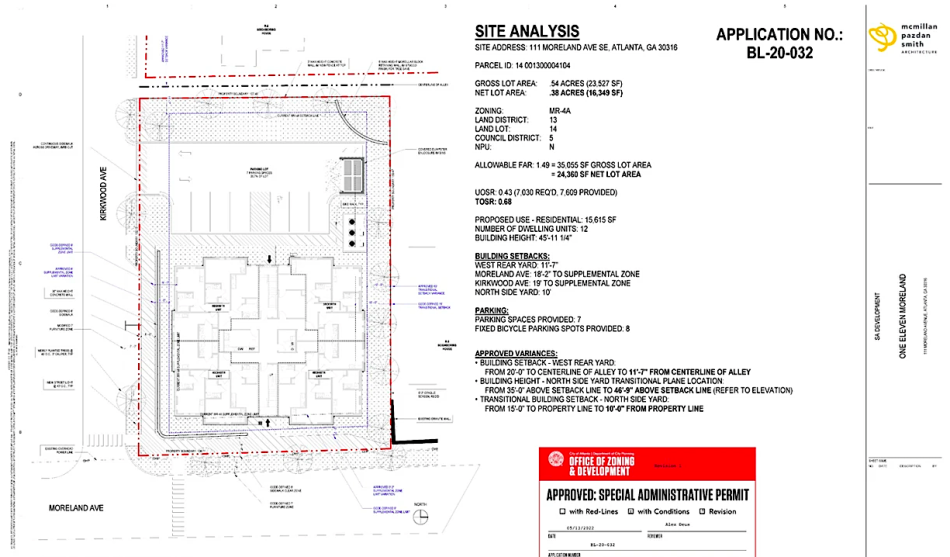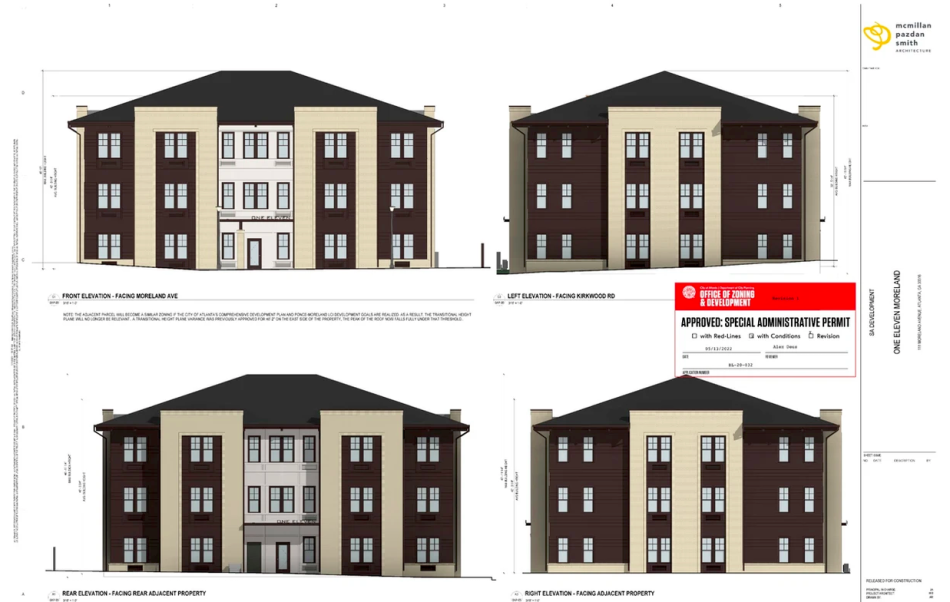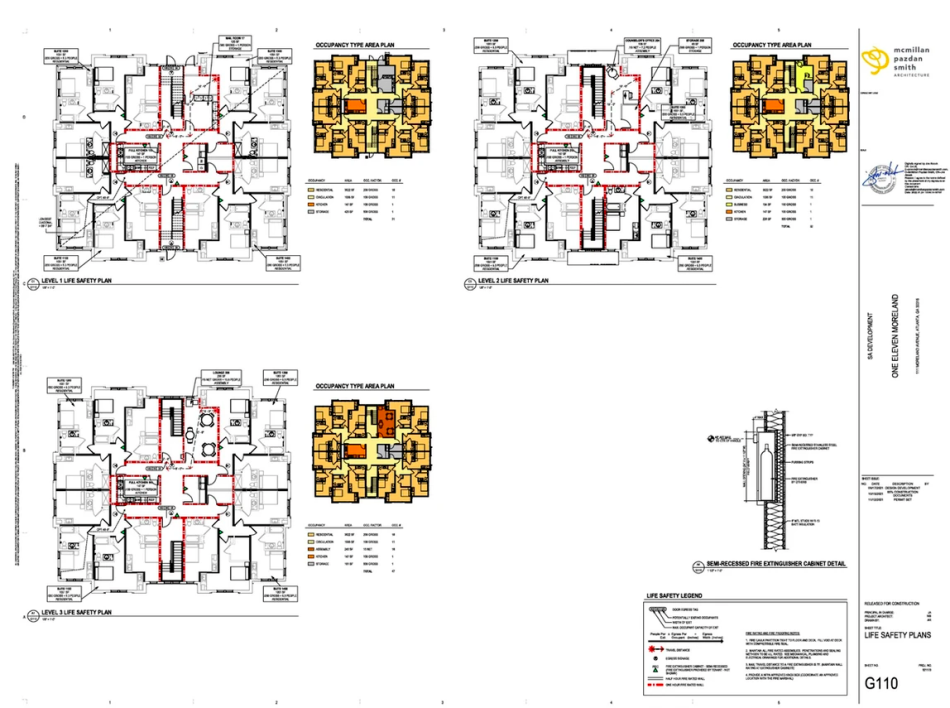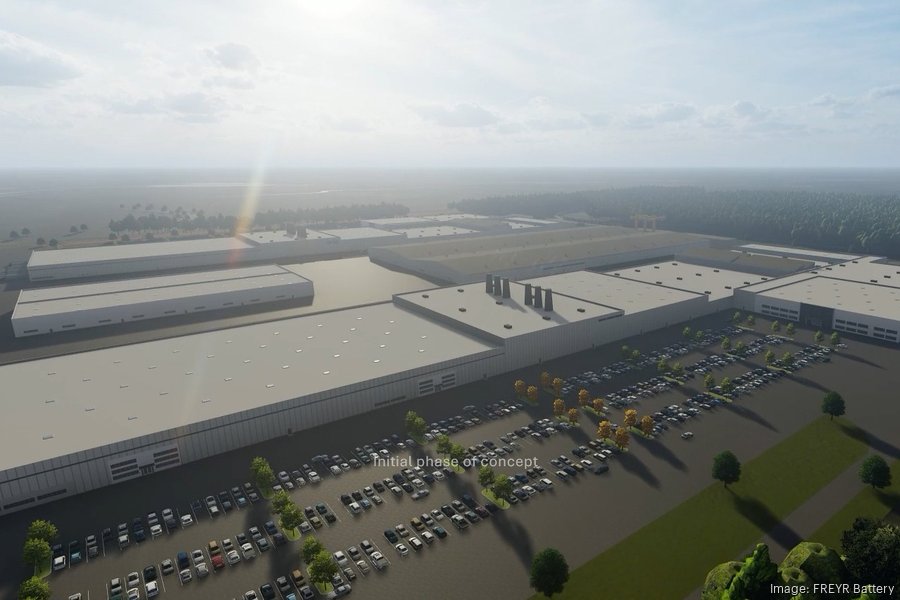Transit-oriented, 350-apartment development officially a go
Transit-oriented, 350-apartment development officially a go
Transit-oriented, 350-apartment development officially a go
Josh Green
Tue, 02/11/2025 – 10:17
An influx of new housing near Central Perimeter MARTA stations shows few signs of slowing down, with well over 1,000 units recently delivered or now in the pipeline.
National developer High Street Residential has officially broken ground on a Brookhaven mid-rise project called Residences at Perimeter Summit, a 350-unit apartment venture with two signed restaurant concepts in the mix nearby.
The seven-story building will rise at 1251 Perimeter Summit Parkway, just south of Perimeter Mall within the Interstate 285 loop. In an announcement today, HSR officials called Brookhaven “one of the most desirable suburbs in Georgia.”
Last year HSR, a subsidiary of Trammell Crow Company, closed on 4 acres of land to build the Residences—what project leaders have called a transit-oriented development within walking distance of two MARTA hubs served by rail.
By foot, MARTA’s Medical Center station is roughly a mile away, and Dunwoody station about 1.2 miles.
As designed by the Cooper Carry architecture firm, the Residences project will include studios to three-bedroom apartments with around 900 square feet on average. Plans call for five floors of residential over two parking levels, with a 475-space garage.
Amenities are set to include three courtyards, a resort-style pool and dog park, a clubroom, fitness center, coworking space, golf simulator, pet spa, sauna, and an elevated resident lounge with a kitchen for entertaining and views of the Perimeter skyline, according to High Street officials.
The apartments, all classified as luxury, will be part of the larger Perimeter Summit district, a 1.7-million-square-foot campus purchased by Spear Street Capital in 2022 with buildings standing 21, 18, and 16 stories. Access to existing walking trails around that complex will be another perk of the apartments, per HSR officials.
The Residences are scheduled to deliver by late 2026, with New South Construction onboard to build it.
“Brookhaven, with its historic charm and proximity to one of the liveliest office markets in the country, provides a premier living experience,” Scott Kirchhoff, a principal with HSR’s Atlanta office, noted in today’s groundbreaking announcement.
Beyond the apartments, Perimeter Summit includes office and retail space spread across four buildings total, plus a condo building and 182-room hotel.
According to HSR, Spear Street has attracted “multiple high-profile headquarters relocations and innovation hubs” to the revived Perimeter Summit complex since acquiring it. The company has also partnered with STHRN Hospitality to bring two new restaurants to the development, The Little Gem and Pizza Stop. Both are set to open this year, per HSR.
Elsewhere in Atlanta, HSR recently developed the multifamily component of Georgia Tech’s 18-acre Science Square project on the Westside, The Grace Residences.
In other Central Perimeter residential news, GID Development Group finished the first two apartment buildings in its massive High Street venture last year. Those include 598 apartments within a short walk of MARTA’s Dunwoody station.
Also in Brookhaven, a nearby AMLI-branded, mixed-use project has started delivering another 630 rentals in four buildings. Walkability to MARTA stations is also flaunted as a perk of that project.
A year ago, plans for another 300 multifamily residences were also floated for the last remaining parcel next to insurance giant State Farm’s towering Central Perimeter campus.
…
Follow us on social media:
Twitter / Facebook/and now: Instagram
• Brookhaven news, discussion (Urbanize Atlanta)
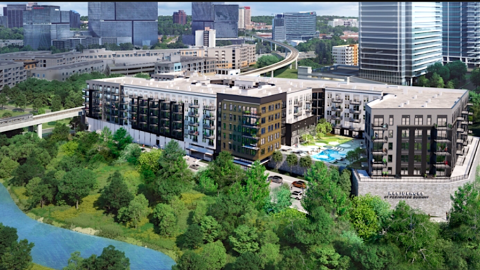
Transit-oriented, 350-apartment development officially a go
Josh Green
Tue, 02/11/2025 – 10:17
An influx of new housing near Central Perimeter MARTA stations shows few signs of slowing down, with well over 1,000 units recently delivered or now in the pipeline. National developer High Street Residential has officially broken ground on a Brookhaven mid-rise project called Residences at Perimeter Summit, a 350-unit apartment venture with two signed restaurant concepts in the mix nearby. The seven-story building will rise at 1251 Perimeter Summit Parkway, just south of Perimeter Mall within the Interstate 285 loop. In an announcement today, HSR officials called Brookhaven “one of the most desirable suburbs in Georgia.”Last year HSR, a subsidiary of Trammell Crow Company, closed on 4 acres of land to build the Residences—what project leaders have called a transit-oriented development within walking distance of two MARTA hubs served by rail. By foot, MARTA’s Medical Center station is roughly a mile away, and Dunwoody station about 1.2 miles.As designed by the Cooper Carry architecture firm, the Residences project will include studios to three-bedroom apartments with around 900 square feet on average. Plans call for five floors of residential over two parking levels, with a 475-space garage.
Courtesy of High Street Residential; designs, Cooper Carry
Amenities are set to include three courtyards, a resort-style pool and dog park, a clubroom, fitness center, coworking space, golf simulator, pet spa, sauna, and an elevated resident lounge with a kitchen for entertaining and views of the Perimeter skyline, according to High Street officials.The apartments, all classified as luxury, will be part of the larger Perimeter Summit district, a 1.7-million-square-foot campus purchased by Spear Street Capital in 2022 with buildings standing 21, 18, and 16 stories. Access to existing walking trails around that complex will be another perk of the apartments, per HSR officials. The Residences are scheduled to deliver by late 2026, with New South Construction onboard to build it. “Brookhaven, with its historic charm and proximity to one of the liveliest office markets in the country, provides a premier living experience,” Scott Kirchhoff, a principal with HSR’s Atlanta office, noted in today’s groundbreaking announcement.
The site’s proximity to Perimeter Mall (above), Interstate 285, and Ga. Highway 400. Google Maps
Beyond the apartments, Perimeter Summit includes office and retail space spread across four buildings total, plus a condo building and 182-room hotel.According to HSR, Spear Street has attracted “multiple high-profile headquarters relocations and innovation hubs” to the revived Perimeter Summit complex since acquiring it. The company has also partnered with STHRN Hospitality to bring two new restaurants to the development, The Little Gem and Pizza Stop. Both are set to open this year, per HSR. Elsewhere in Atlanta, HSR recently developed the multifamily component of Georgia Tech’s 18-acre Science Square project on the Westside, The Grace Residences. In other Central Perimeter residential news, GID Development Group finished the first two apartment buildings in its massive High Street venture last year. Those include 598 apartments within a short walk of MARTA’s Dunwoody station. Also in Brookhaven, a nearby AMLI-branded, mixed-use project has started delivering another 630 rentals in four buildings. Walkability to MARTA stations is also flaunted as a perk of that project. A year ago, plans for another 300 multifamily residences were also floated for the last remaining parcel next to insurance giant State Farm’s towering Central Perimeter campus. …Follow us on social media: Twitter / Facebook/and now: Instagram • Brookhaven news, discussion (Urbanize Atlanta)
Tags
1251 Perimeter Summit Parkway
5005 Perimeter Summit Boulevard
Perimeter Summit
High Street Residential
Trammell Crow Company
City of Brookhaven
Central Perimeter
Perimeter
MARTA
TOD
Transit-Oriented Development
TODs
MARTA trains (38877
Dunwoody MARTA Station
Alternate Transportation
Alternative Transportation
Atlanta apartments
Brookhaven Apartments
Atlanta Development
Multifamily Development
Perimeter Mall
Cooper Carry
Spear Street Capital
STHRN Hospitality
The Little Gem
Pizza Stop
New South Construction
Images
The site’s proximity to Perimeter Mall (above), Interstate 285, and Ga. Highway 400. Google Maps
Courtesy of High Street Residential; designs, Cooper Carry
Subtitle
Builders stress proximity to two MARTA stations for Brookhaven’s Residences at Perimeter Summit
Neighborhood
Brookhaven
Background Image
Image
Associated Project
The Residences at Perimeter Summit
Before/After Images
Sponsored Post
Off Read More
Transit-oriented, 350-apartment development officially a go
Josh Green
Tue, 02/11/2025 – 10:17
An influx of new housing near Central Perimeter MARTA stations shows few signs of slowing down, with well over 1,000 units recently delivered or now in the pipeline. National developer High Street Residential has officially broken ground on a Brookhaven mid-rise project called Residences at Perimeter Summit, a 350-unit apartment venture with two signed restaurant concepts in the mix nearby. The seven-story building will rise at 1251 Perimeter Summit Parkway, just south of Perimeter Mall within the Interstate 285 loop. In an announcement today, HSR officials called Brookhaven “one of the most desirable suburbs in Georgia.”Last year HSR, a subsidiary of Trammell Crow Company, closed on 4 acres of land to build the Residences—what project leaders have called a transit-oriented development within walking distance of two MARTA hubs served by rail. By foot, MARTA’s Medical Center station is roughly a mile away, and Dunwoody station about 1.2 miles.As designed by the Cooper Carry architecture firm, the Residences project will include studios to three-bedroom apartments with around 900 square feet on average. Plans call for five floors of residential over two parking levels, with a 475-space garage.
Courtesy of High Street Residential; designs, Cooper Carry
Amenities are set to include three courtyards, a resort-style pool and dog park, a clubroom, fitness center, coworking space, golf simulator, pet spa, sauna, and an elevated resident lounge with a kitchen for entertaining and views of the Perimeter skyline, according to High Street officials.The apartments, all classified as luxury, will be part of the larger Perimeter Summit district, a 1.7-million-square-foot campus purchased by Spear Street Capital in 2022 with buildings standing 21, 18, and 16 stories. Access to existing walking trails around that complex will be another perk of the apartments, per HSR officials. The Residences are scheduled to deliver by late 2026, with New South Construction onboard to build it. “Brookhaven, with its historic charm and proximity to one of the liveliest office markets in the country, provides a premier living experience,” Scott Kirchhoff, a principal with HSR’s Atlanta office, noted in today’s groundbreaking announcement.
The site’s proximity to Perimeter Mall (above), Interstate 285, and Ga. Highway 400. Google Maps
Beyond the apartments, Perimeter Summit includes office and retail space spread across four buildings total, plus a condo building and 182-room hotel.According to HSR, Spear Street has attracted “multiple high-profile headquarters relocations and innovation hubs” to the revived Perimeter Summit complex since acquiring it. The company has also partnered with STHRN Hospitality to bring two new restaurants to the development, The Little Gem and Pizza Stop. Both are set to open this year, per HSR. Elsewhere in Atlanta, HSR recently developed the multifamily component of Georgia Tech’s 18-acre Science Square project on the Westside, The Grace Residences. In other Central Perimeter residential news, GID Development Group finished the first two apartment buildings in its massive High Street venture last year. Those include 598 apartments within a short walk of MARTA’s Dunwoody station. Also in Brookhaven, a nearby AMLI-branded, mixed-use project has started delivering another 630 rentals in four buildings. Walkability to MARTA stations is also flaunted as a perk of that project. A year ago, plans for another 300 multifamily residences were also floated for the last remaining parcel next to insurance giant State Farm’s towering Central Perimeter campus. …Follow us on social media: Twitter / Facebook/and now: Instagram • Brookhaven news, discussion (Urbanize Atlanta)
Tags
1251 Perimeter Summit Parkway
5005 Perimeter Summit Boulevard
Perimeter Summit
High Street Residential
Trammell Crow Company
City of Brookhaven
Central Perimeter
Perimeter
MARTA
TOD
Transit-Oriented Development
TODs
MARTA trains (38877
Dunwoody MARTA Station
Alternate Transportation
Alternative Transportation
Atlanta apartments
Brookhaven Apartments
Atlanta Development
Multifamily Development
Perimeter Mall
Cooper Carry
Spear Street Capital
STHRN Hospitality
The Little Gem
Pizza Stop
New South Construction
Images
The site’s proximity to Perimeter Mall (above), Interstate 285, and Ga. Highway 400. Google Maps
Courtesy of High Street Residential; designs, Cooper Carry
Subtitle
Builders stress proximity to two MARTA stations for Brookhaven’s Residences at Perimeter Summit
Neighborhood
Brookhaven
Background Image
Image
Associated Project
The Residences at Perimeter Summit
Before/After Images
Sponsored Post
Off
High Street Starts Work on Perimeter Summit Apartments
High Street Starts Work on Perimeter Summit Apartments

High Street Residential (HSR), the residential subsidiary of Trammell Crow Company, has broken ground on the Residences at Perimeter Summit. The seven-story, 350-unit mid-rise multifamily community is located in Brookhaven, Georgia. HSR paid $11.5 million for the property at 1251 Perimeter Summit Pkwy. The project is part of Perimeter Summit, a mixed-use community consisting of 1.7 million square feet of office and retail space across four buildings, a 182-room hotel, and a condo building.
The Residences at Perimeter Summit will include units from 900 square feet to mid-1,400 square feet. Unit amenities will include private balconies in select units. The project will also boast amenities such as an elevated pool, three spacious courtyards, a 1,200-square-foot speakeasy lounge, a fitness center, a clubroom, a coworking center, private conference and study rooms, a tasting room, a pet spa, and a golf simulator.
Cooper Carry is leading the design of the project, and New South Construction is providing construction services for the development
The post High Street Starts Work on Perimeter Summit Apartments appeared first on Connect CRE.
High Street Residential (HSR), the residential subsidiary of Trammell Crow Company, has broken ground on the Residences at Perimeter Summit. The seven-story, 350-unit mid-rise multifamily community is located in Brookhaven, Georgia. HSR paid $11.5 million for the property at 1251 Perimeter Summit Pkwy. The project is part of Perimeter Summit, a mixed-use community consisting of …
The post High Street Starts Work on Perimeter Summit Apartments appeared first on Connect CRE. Read MoreAtlanta Commercial Real Estate News
High Street Residential (HSR), the residential subsidiary of Trammell Crow Company, has broken ground on the Residences at Perimeter Summit. The seven-story, 350-unit mid-rise multifamily community is located in Brookhaven, Georgia. HSR paid $11.5 million for the property at 1251 Perimeter Summit Pkwy. The project is part of Perimeter Summit, a mixed-use community consisting of …
The post High Street Starts Work on Perimeter Summit Apartments appeared first on Connect CRE.
Transit advocate: How MARTA can quickly, noticeably improve
Transit advocate: How MARTA can quickly, noticeably improve
Transit advocate: How MARTA can quickly, noticeably improve
Josh Green
Tue, 02/11/2025 – 08:43
Most people who follow Atlanta urban planning would associate Matthew Rao with his passion project—chairing the transit advocacy group Beltline Rail Now, which he’s done since 2021. But as an Atlantan of 50 years and Georgia Tech-educated industrial designer by day, Rao has followed MARTA literally since its beginnings. His father took him, as a kid, to watch the first test-runs for MARTA’s east-west trains in the late 1970s. A spectacle, indeed.
Inspired by a recent, witty reader comment on these pages—as spotlighted Saturday on our social media feeds—Rao got to thinking not about the long-term prospects of light-rail cars zipping along the Beltline, but about how MARTA could quickly take steps to improve public perception, in his estimation. The following Letter to the Editor is “written from my perspective as a citizen, resident, and business owner in Midtown,” he notes. It’s been lightly edited for clarity and length.
…
Dear Editor,
I live three blocks from the Midtown MARTA station and chose to live where I do, within walking distance to a station, as a requirement. I later moved my business to a storefront here to further reduce my carbon footprint, create access for all of my employees present and future, and to make riding MARTA as easy as possible.
I ride MARTA rail about once per week, on average. I nearly always take it to the airport, and I will take it to Buckhead, downtown, or various other points. I walk to work, so no transit is needed for a commute.
In other words: I’m the “transit-optional” rider MARTA needs to court.
Our MARTA rail system is one of only three like it, the others being Washington D.C.’s Metrorail and San Francisco’s BART. There are other fine American metro systems built since those three, but Atlanta, D.C., and the Bay Area are special in a variety of ways.
Having lived here since middle school, I was around for MARTA’s opening day. There was a giddiness in the air that I still remember. Atlanta, whose metro population was less than 1.5 million in the late 1970s—yes, that’s right—was joining the league of big cities. The tallest buildings in all of Midtown were the “towers” of Colony Square. City leaders knew then that building the subway with three stations, serving the then low-density Midtown, would create the conditions for its morphing from a residential neighborhood into a city. It has. And it’s getting denser all the time.
During the mid-1990s Olympics era, there was such pride in our system. The trains ran often and late into the night—and they were packed. The venues were clustered to take advantage of station locations. No one drove a car to attend the Games.
I felt that same sense of pride and excitement as MARTA recently unveiled its new railcars. The excitement, in fact, was palpable and intense for the new Swiss-made trainsets. They are beautiful, with interiors designed for today’s lifestyles, including spaces for bikes and wheelchairs and luggage. A four-car train holds more passengers than the current six-car model, and two of these can be coupled together.
We’ll soon have the best metro railcars in America. That’s something to celebrate!
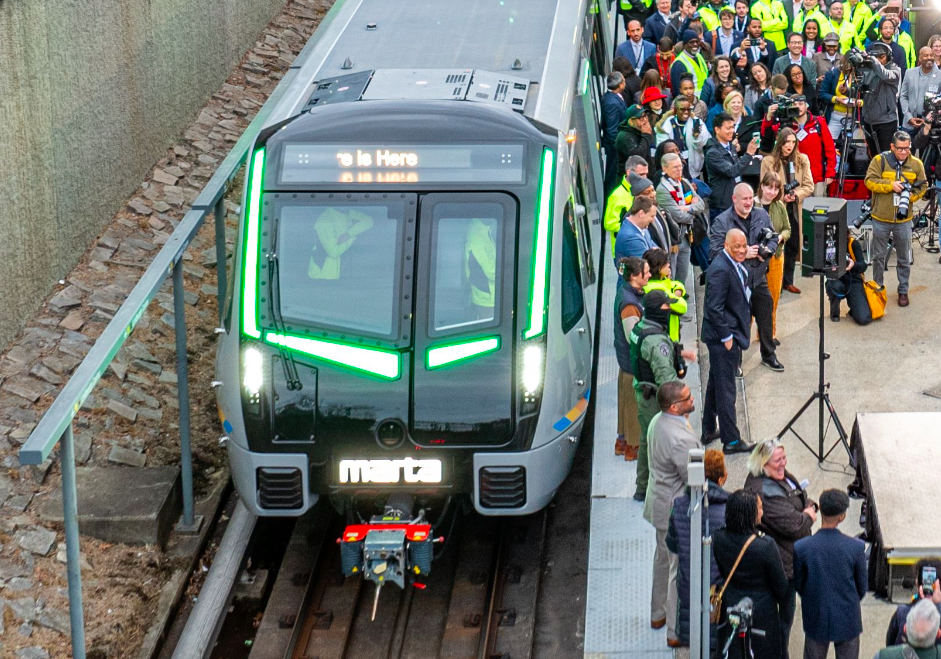
The front exteriors of railcars will have a lighted “smile” in either red, gold, blue, or green that denotes the color of each approaching rail line, per MARTA. Courtesy of MARTA
But a new fleet alone won’t make MARTA the agency it needs to be, nor will it necessarily make ridership recover and grow. For generations to come, MARTA will be the only transit agency we have. Let’s support change and make it happen. There’s a desire on the inside at MARTA—as I’ve personally seen—to become one of the nation’s leading transit agencies, as measured by ridership and rider satisfaction. But they haven’t gotten there yet.
Other cities are recovering and exceeding their pre-pandemic levels of ridership. So what’ll bring transit-optional riders like me back onboard with MARTA, riding more often?
It’s a long list. But MARTA can do some things this year, right now:
1. Clean it up.
It saddens me to imagine the incredible new Swiss-made railcars maintained like the ones we have now. I ride transit all over the world, and there are cities that do and cities that don’t when it comes to cleanliness and states of good repair. That goes for the trains and the stations. Have the beautiful stainless steel HVAC ducts at Peachtree Center station been cleaned since the Olympics?
2. Increase frequency, especially at night and on weekends.
We shouldn’t ever wait more than 10 minutes for a train. Often on the Red and Gold lines during weekdays, I don’t. But when you wait too long, the transit-optional rider considers ride-share. We aren’t just commuters anymore, and we need an urban rail system to work for our lives. That’s a 24-7 life—not a 9-to-6 life.
3. Make MARTA feel safer.
I don’t know what the stats are, but we have to accept the reality that many Atlantans won’t ride MARTA because they don’t feel safe, especially at night. Make sure everyone riding has a valid ticket and that MARTA police patrol trains and stations. Don’t allow bad behavior and enforce the rules we already have. That makes us all feel better about being encapsulated in a train for 15, 20, or 40 minutes.
4. Move forward as fast as possible with the $12-billion More MARTA expansion.
Show progress. Stop the endless study and reevaluation of the projects defined in 2019 and get on with it. These bus-rapid transit and light-rail projects coupled with station improvements do another thing that we need: connect the many nodes of density to each other and to the rest of the city. That means a one-connection ride from whenever you are to more places that we all want to reach.
It’s clear the suburban counties are not ready to join MARTA, and when given the opportunity to expand their own systems this past November, they rejected that soundly. They don’t want transit. Not yet. More MARTA is for the City of Atlanta. Only. Let’s worry about that as far as expansion goes.
5. Stop the truncation of the Red and Green lines after 9 p.m. and run them all the way, end to end, at all times.
The forced transfer to the Gold and Blue lines means more hassle, more time spent waiting for a train, and a loss of riders. And for those on the Gold line between the Airport and Lindbergh, a longer wait for a more crowded train. Cities don’t do this when they want to attract more riders and keep cars off the road. Extend the Green line to Avondale and use the third platform there for riders to transfer from a Blue train to a Green train.
6. Use the Breeze system we already have to change the fare system and graduate the fare.
I often don’t take MARTA one or two stops because the fare is high for that. And visitors to the city going from Airport to North Springs stations pay the same as I do to go one stop. Decreasing the fare for short trips and increasing it for longer ones is what those systems like BART and Metrorail did from day one. This stimulates rides for short trips and increases revenue from longer ones. Those with monthly passes and students would not experience a fee hike. Only the single-use, transit-optional rider like me. It costs $30 to $35 for a one-way ride to the airport (without surge pricing). Would I pay $5 or even $7 for that on the train? Absolutely.
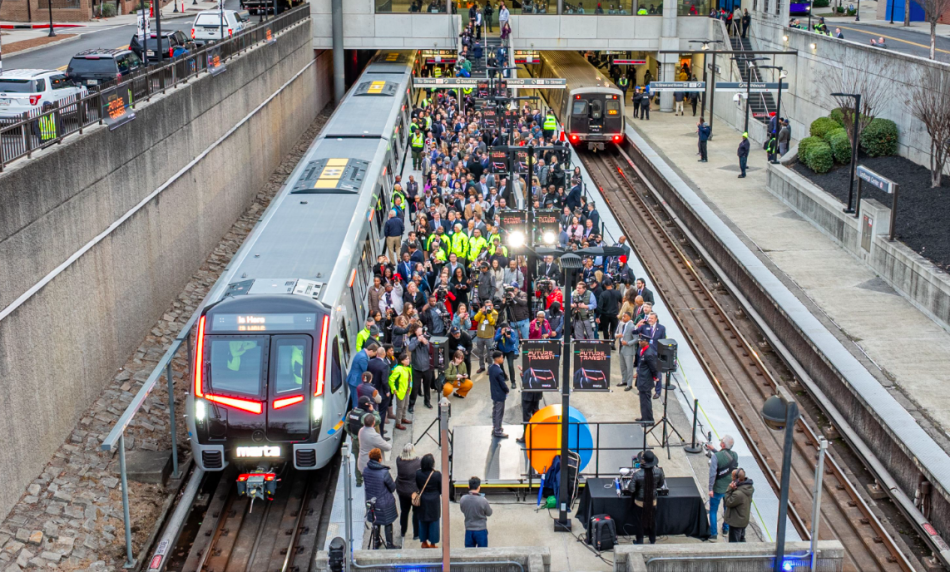
A juxtaposition of MARTA’s first CQ400 train to be operational on tracks (left) and a current railcar. Courtesy of MARTA

How the new MARTA railcars’ open gangway designs allow for passenger travel throughout the train. Courtesy of MARTA
Big picture, creating more density near and at the MARTA stations we have and modifying land use policies is another realm of possibility for growing ridership.
The lesson of the early 21st century is that unless we expand the American Dream in a way that makes a family consider other options than a single-family house with a yard in a far-flung suburb that was once a forest or farm, we won’t ever be able to build enough MARTA.
Chasing the suburbs with MARTA rail is exactly what we don’t need to do.
— Matthew Rao
…
Follow us on social media:
Twitter / Facebook/and now: Instagram
• Recent MARTA news, discussion (Urbanize Atlanta)
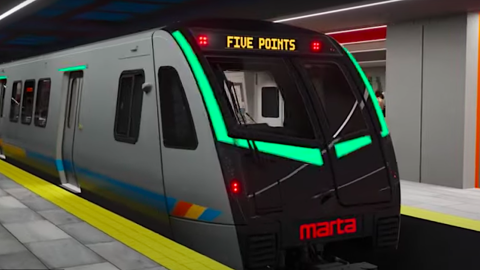
Transit advocate: How MARTA can quickly, noticeably improve
Josh Green
Tue, 02/11/2025 – 08:43
Most people who follow Atlanta urban planning would associate Matthew Rao with his passion project—chairing the transit advocacy group Beltline Rail Now, which he’s done since 2021. But as an Atlantan of 50 years and Georgia Tech-educated industrial designer by day, Rao has followed MARTA literally since its beginnings. His father took him, as a kid, to watch the first test-runs for MARTA’s east-west trains in the late 1970s. A spectacle, indeed. Inspired by a recent, witty reader comment on these pages—as spotlighted Saturday on our social media feeds—Rao got to thinking not about the long-term prospects of light-rail cars zipping along the Beltline, but about how MARTA could quickly take steps to improve public perception, in his estimation. The following Letter to the Editor is “written from my perspective as a citizen, resident, and business owner in Midtown,” he notes. It’s been lightly edited for clarity and length. …Dear Editor, I live three blocks from the Midtown MARTA station and chose to live where I do, within walking distance to a station, as a requirement. I later moved my business to a storefront here to further reduce my carbon footprint, create access for all of my employees present and future, and to make riding MARTA as easy as possible. I ride MARTA rail about once per week, on average. I nearly always take it to the airport, and I will take it to Buckhead, downtown, or various other points. I walk to work, so no transit is needed for a commute. In other words: I’m the “transit-optional” rider MARTA needs to court. Our MARTA rail system is one of only three like it, the others being Washington D.C.’s Metrorail and San Francisco’s BART. There are other fine American metro systems built since those three, but Atlanta, D.C., and the Bay Area are special in a variety of ways. Having lived here since middle school, I was around for MARTA’s opening day. There was a giddiness in the air that I still remember. Atlanta, whose metro population was less than 1.5 million in the late 1970s—yes, that’s right—was joining the league of big cities. The tallest buildings in all of Midtown were the “towers” of Colony Square. City leaders knew then that building the subway with three stations, serving the then low-density Midtown, would create the conditions for its morphing from a residential neighborhood into a city. It has. And it’s getting denser all the time.During the mid-1990s Olympics era, there was such pride in our system. The trains ran often and late into the night—and they were packed. The venues were clustered to take advantage of station locations. No one drove a car to attend the Games. I felt that same sense of pride and excitement as MARTA recently unveiled its new railcars. The excitement, in fact, was palpable and intense for the new Swiss-made trainsets. They are beautiful, with interiors designed for today’s lifestyles, including spaces for bikes and wheelchairs and luggage. A four-car train holds more passengers than the current six-car model, and two of these can be coupled together. We’ll soon have the best metro railcars in America. That’s something to celebrate!
The front exteriors of railcars will have a lighted “smile” in either red, gold, blue, or green that denotes the color of each approaching rail line, per MARTA. Courtesy of MARTA
But a new fleet alone won’t make MARTA the agency it needs to be, nor will it necessarily make ridership recover and grow. For generations to come, MARTA will be the only transit agency we have. Let’s support change and make it happen. There’s a desire on the inside at MARTA—as I’ve personally seen—to become one of the nation’s leading transit agencies, as measured by ridership and rider satisfaction. But they haven’t gotten there yet.Other cities are recovering and exceeding their pre-pandemic levels of ridership. So what’ll bring transit-optional riders like me back onboard with MARTA, riding more often? It’s a long list. But MARTA can do some things this year, right now: 1. Clean it up. It saddens me to imagine the incredible new Swiss-made railcars maintained like the ones we have now. I ride transit all over the world, and there are cities that do and cities that don’t when it comes to cleanliness and states of good repair. That goes for the trains and the stations. Have the beautiful stainless steel HVAC ducts at Peachtree Center station been cleaned since the Olympics? 2. Increase frequency, especially at night and on weekends. We shouldn’t ever wait more than 10 minutes for a train. Often on the Red and Gold lines during weekdays, I don’t. But when you wait too long, the transit-optional rider considers ride-share. We aren’t just commuters anymore, and we need an urban rail system to work for our lives. That’s a 24-7 life—not a 9-to-6 life. 3. Make MARTA feel safer.
Shutterstock
I don’t know what the stats are, but we have to accept the reality that many Atlantans won’t ride MARTA because they don’t feel safe, especially at night. Make sure everyone riding has a valid ticket and that MARTA police patrol trains and stations. Don’t allow bad behavior and enforce the rules we already have. That makes us all feel better about being encapsulated in a train for 15, 20, or 40 minutes. 4. Move forward as fast as possible with the $12-billion More MARTA expansion. Show progress. Stop the endless study and reevaluation of the projects defined in 2019 and get on with it. These bus-rapid transit and light-rail projects coupled with station improvements do another thing that we need: connect the many nodes of density to each other and to the rest of the city. That means a one-connection ride from whenever you are to more places that we all want to reach. It’s clear the suburban counties are not ready to join MARTA, and when given the opportunity to expand their own systems this past November, they rejected that soundly. They don’t want transit. Not yet. More MARTA is for the City of Atlanta. Only. Let’s worry about that as far as expansion goes. 5. Stop the truncation of the Red and Green lines after 9 p.m. and run them all the way, end to end, at all times. The forced transfer to the Gold and Blue lines means more hassle, more time spent waiting for a train, and a loss of riders. And for those on the Gold line between the Airport and Lindbergh, a longer wait for a more crowded train. Cities don’t do this when they want to attract more riders and keep cars off the road. Extend the Green line to Avondale and use the third platform there for riders to transfer from a Blue train to a Green train.6. Use the Breeze system we already have to change the fare system and graduate the fare. I often don’t take MARTA one or two stops because the fare is high for that. And visitors to the city going from Airport to North Springs stations pay the same as I do to go one stop. Decreasing the fare for short trips and increasing it for longer ones is what those systems like BART and Metrorail did from day one. This stimulates rides for short trips and increases revenue from longer ones. Those with monthly passes and students would not experience a fee hike. Only the single-use, transit-optional rider like me. It costs $30 to $35 for a one-way ride to the airport (without surge pricing). Would I pay $5 or even $7 for that on the train? Absolutely.
A juxtaposition of MARTA’s first CQ400 train to be operational on tracks (left) and a current railcar. Courtesy of MARTA
How the new MARTA railcars’ open gangway designs allow for passenger travel throughout the train. Courtesy of MARTA
Big picture, creating more density near and at the MARTA stations we have and modifying land use policies is another realm of possibility for growing ridership. The lesson of the early 21st century is that unless we expand the American Dream in a way that makes a family consider other options than a single-family house with a yard in a far-flung suburb that was once a forest or farm, we won’t ever be able to build enough MARTA. Chasing the suburbs with MARTA rail is exactly what we don’t need to do. — Matthew Rao …Follow us on social media: Twitter / Facebook/and now: Instagram • Recent MARTA news, discussion (Urbanize Atlanta)
Tags
MARTA
Midtown Atlanta
Atlanta Transit
Metropolitan Atlanta Rapid Transit Authority
Alternative Transportation
Alternate Transportation
MARTA Stations
Atlanta MARTA stations
MARTA trains
New MARTA trains
Matthew Rao
BeltLine Rail Now!
Atlanta Bus Transportation
Atlanta Transit Link Authority
MARTA Schedules
Letter to the Editor
Letters to Editor
Letters to the Editor
Subtitle
In Letter to Editor, BRN chair, designer Matthew Rao waxes on transit upgrades, big and small
Neighborhood
Citywide
Background Image
Image
Before/After Images
Sponsored Post
Off Read More
Transit advocate: How MARTA can quickly, noticeably improve
Josh Green
Tue, 02/11/2025 – 08:43
Most people who follow Atlanta urban planning would associate Matthew Rao with his passion project—chairing the transit advocacy group Beltline Rail Now, which he’s done since 2021. But as an Atlantan of 50 years and Georgia Tech-educated industrial designer by day, Rao has followed MARTA literally since its beginnings. His father took him, as a kid, to watch the first test-runs for MARTA’s east-west trains in the late 1970s. A spectacle, indeed. Inspired by a recent, witty reader comment on these pages—as spotlighted Saturday on our social media feeds—Rao got to thinking not about the long-term prospects of light-rail cars zipping along the Beltline, but about how MARTA could quickly take steps to improve public perception, in his estimation. The following Letter to the Editor is “written from my perspective as a citizen, resident, and business owner in Midtown,” he notes. It’s been lightly edited for clarity and length. …Dear Editor, I live three blocks from the Midtown MARTA station and chose to live where I do, within walking distance to a station, as a requirement. I later moved my business to a storefront here to further reduce my carbon footprint, create access for all of my employees present and future, and to make riding MARTA as easy as possible. I ride MARTA rail about once per week, on average. I nearly always take it to the airport, and I will take it to Buckhead, downtown, or various other points. I walk to work, so no transit is needed for a commute. In other words: I’m the “transit-optional” rider MARTA needs to court. Our MARTA rail system is one of only three like it, the others being Washington D.C.’s Metrorail and San Francisco’s BART. There are other fine American metro systems built since those three, but Atlanta, D.C., and the Bay Area are special in a variety of ways. Having lived here since middle school, I was around for MARTA’s opening day. There was a giddiness in the air that I still remember. Atlanta, whose metro population was less than 1.5 million in the late 1970s—yes, that’s right—was joining the league of big cities. The tallest buildings in all of Midtown were the “towers” of Colony Square. City leaders knew then that building the subway with three stations, serving the then low-density Midtown, would create the conditions for its morphing from a residential neighborhood into a city. It has. And it’s getting denser all the time.During the mid-1990s Olympics era, there was such pride in our system. The trains ran often and late into the night—and they were packed. The venues were clustered to take advantage of station locations. No one drove a car to attend the Games. I felt that same sense of pride and excitement as MARTA recently unveiled its new railcars. The excitement, in fact, was palpable and intense for the new Swiss-made trainsets. They are beautiful, with interiors designed for today’s lifestyles, including spaces for bikes and wheelchairs and luggage. A four-car train holds more passengers than the current six-car model, and two of these can be coupled together. We’ll soon have the best metro railcars in America. That’s something to celebrate!
The front exteriors of railcars will have a lighted “smile” in either red, gold, blue, or green that denotes the color of each approaching rail line, per MARTA. Courtesy of MARTA
But a new fleet alone won’t make MARTA the agency it needs to be, nor will it necessarily make ridership recover and grow. For generations to come, MARTA will be the only transit agency we have. Let’s support change and make it happen. There’s a desire on the inside at MARTA—as I’ve personally seen—to become one of the nation’s leading transit agencies, as measured by ridership and rider satisfaction. But they haven’t gotten there yet.Other cities are recovering and exceeding their pre-pandemic levels of ridership. So what’ll bring transit-optional riders like me back onboard with MARTA, riding more often? It’s a long list. But MARTA can do some things this year, right now: 1. Clean it up. It saddens me to imagine the incredible new Swiss-made railcars maintained like the ones we have now. I ride transit all over the world, and there are cities that do and cities that don’t when it comes to cleanliness and states of good repair. That goes for the trains and the stations. Have the beautiful stainless steel HVAC ducts at Peachtree Center station been cleaned since the Olympics? 2. Increase frequency, especially at night and on weekends. We shouldn’t ever wait more than 10 minutes for a train. Often on the Red and Gold lines during weekdays, I don’t. But when you wait too long, the transit-optional rider considers ride-share. We aren’t just commuters anymore, and we need an urban rail system to work for our lives. That’s a 24-7 life—not a 9-to-6 life. 3. Make MARTA feel safer.
Shutterstock
I don’t know what the stats are, but we have to accept the reality that many Atlantans won’t ride MARTA because they don’t feel safe, especially at night. Make sure everyone riding has a valid ticket and that MARTA police patrol trains and stations. Don’t allow bad behavior and enforce the rules we already have. That makes us all feel better about being encapsulated in a train for 15, 20, or 40 minutes. 4. Move forward as fast as possible with the $12-billion More MARTA expansion. Show progress. Stop the endless study and reevaluation of the projects defined in 2019 and get on with it. These bus-rapid transit and light-rail projects coupled with station improvements do another thing that we need: connect the many nodes of density to each other and to the rest of the city. That means a one-connection ride from whenever you are to more places that we all want to reach. It’s clear the suburban counties are not ready to join MARTA, and when given the opportunity to expand their own systems this past November, they rejected that soundly. They don’t want transit. Not yet. More MARTA is for the City of Atlanta. Only. Let’s worry about that as far as expansion goes. 5. Stop the truncation of the Red and Green lines after 9 p.m. and run them all the way, end to end, at all times. The forced transfer to the Gold and Blue lines means more hassle, more time spent waiting for a train, and a loss of riders. And for those on the Gold line between the Airport and Lindbergh, a longer wait for a more crowded train. Cities don’t do this when they want to attract more riders and keep cars off the road. Extend the Green line to Avondale and use the third platform there for riders to transfer from a Blue train to a Green train.6. Use the Breeze system we already have to change the fare system and graduate the fare. I often don’t take MARTA one or two stops because the fare is high for that. And visitors to the city going from Airport to North Springs stations pay the same as I do to go one stop. Decreasing the fare for short trips and increasing it for longer ones is what those systems like BART and Metrorail did from day one. This stimulates rides for short trips and increases revenue from longer ones. Those with monthly passes and students would not experience a fee hike. Only the single-use, transit-optional rider like me. It costs $30 to $35 for a one-way ride to the airport (without surge pricing). Would I pay $5 or even $7 for that on the train? Absolutely.
A juxtaposition of MARTA’s first CQ400 train to be operational on tracks (left) and a current railcar. Courtesy of MARTA
How the new MARTA railcars’ open gangway designs allow for passenger travel throughout the train. Courtesy of MARTA
Big picture, creating more density near and at the MARTA stations we have and modifying land use policies is another realm of possibility for growing ridership. The lesson of the early 21st century is that unless we expand the American Dream in a way that makes a family consider other options than a single-family house with a yard in a far-flung suburb that was once a forest or farm, we won’t ever be able to build enough MARTA. Chasing the suburbs with MARTA rail is exactly what we don’t need to do. — Matthew Rao …Follow us on social media: Twitter / Facebook/and now: Instagram • Recent MARTA news, discussion (Urbanize Atlanta)
Tags
MARTA
Midtown Atlanta
Atlanta Transit
Metropolitan Atlanta Rapid Transit Authority
Alternative Transportation
Alternate Transportation
MARTA Stations
Atlanta MARTA stations
MARTA trains
New MARTA trains
Matthew Rao
BeltLine Rail Now!
Atlanta Bus Transportation
Atlanta Transit Link Authority
MARTA Schedules
Letter to the Editor
Letters to Editor
Letters to the Editor
Subtitle
In Letter to Editor, BRN chair, designer Matthew Rao waxes on transit upgrades, big and small
Neighborhood
Citywide
Background Image
Image
Before/After Images
Sponsored Post
Off
502-Unit Nashville Rental Community Nearing Completion
502-Unit Nashville Rental Community Nearing Completion

Property Markets Group, New Valley and RMWC announcing the topping off of Society Nashville, a 16-story, 502-unit mixed-use project located at 915 Division St. and set to enhance the growing neighborhood. The Gulch project, which is expected to welcome residents by the end of this year, is part of the PMG’s Society Living multifamily platform. In 2022, it received a $162 million construction loan from Square Mile Capital, as well as $35 million in equity through CrowdStreet.
Designed by Baker Barrios Architects, Society Nashville will include 502 residential units, approximately 8,400 square feet of retail space, and 485 parking spaces. The residential units will offer studio to three-bedroom units.
Amenities include a pool deck, a fitness center, co-working spaces, music room, a rooftop sky deck, and more.
With over 8,500 units planned, the firm is currently developing Society Living properties in Fort Lauderdale, Orlando, Atlanta, Denver, and Brooklyn, with more projects in the pipeline.
The post 502-Unit Nashville Rental Community Nearing Completion appeared first on Connect CRE.
Property Markets Group, New Valley and RMWC announcing the topping off of Society Nashville, a 16-story, 502-unit mixed-use project located at 915 Division St. and set to enhance the growing neighborhood. The Gulch project, which is expected to welcome residents by the end of this year, is part of the PMG’s Society Living multifamily platform. In 2022, it received …
The post 502-Unit Nashville Rental Community Nearing Completion appeared first on Connect CRE. Read MoreAtlanta & Southeast Commercial Real Estate News
Property Markets Group, New Valley and RMWC announcing the topping off of Society Nashville, a 16-story, 502-unit mixed-use project located at 915 Division St. and set to enhance the growing neighborhood. The Gulch project, which is expected to welcome residents by the end of this year, is part of the PMG’s Society Living multifamily platform. In 2022, it received …
The post 502-Unit Nashville Rental Community Nearing Completion appeared first on Connect CRE.
Northwest of Atlanta, new riverside district gears up for opening
Northwest of Atlanta, new riverside district gears up for opening
Northwest of Atlanta, new riverside district gears up for opening
Josh Green
Mon, 02/10/2025 – 15:23
As part of a years-long push to activate a large, underused section of its downtown along the Oostanaula River, the historic northwest Georgia city of Rome is gearing up to welcome a mixed-use project that could inject new life.
Investment firm CCI Real Estate announced today pre-leasing has begun on Nova River District, a new mixed-use venture situated along riverbanks in the Floyd County city’s charming central business district.
First move-ins at the 250-unit residential portion are scheduled for July, according to CCI reps.
Pricing for studios starts from $900, while the largest two-bedroom options are seeking $1,400 monthly and up. (We’ve asked for square footages and will post that info should it come.)
The project is taking shape next to a new hotel, the Courtyard by Marriott Rome Riverwalk, that’s considered the first phase of an assemblage of properties for development the city’s been putting together for years, in hopes of better activating the riverfront.
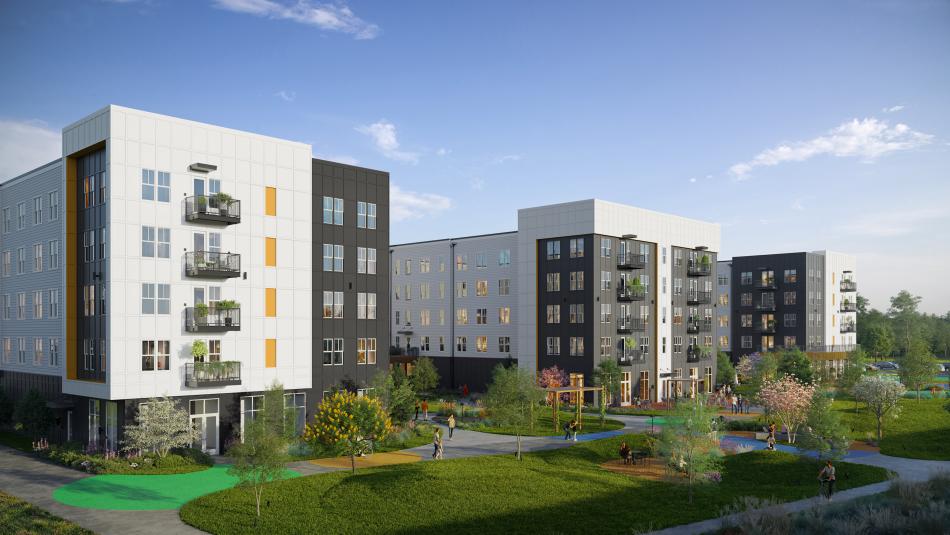
Fresh rendering depicting greenspaces and pathways at Nova River District. Courtesy of CCI Real Estate
Sited on 6.4 acres between the hotel and Fifth Avenue, the Nova River District will also see roughly 14,000 square feet of retail at its base.
Two original buildings on the property are being remade into an additional 4,000 square feet of adaptive-reuse retail space, all near a public pedestrian bridge that spans the river. Another Nova River District facet calls for 1 acre of public greenspace, with a link to the 16.7-mile AdventHealth ECO Greenway.
The broader goal is to add to the vibrancy of Rome’s Historic Broad Street on the other side of the river.
Beyond downtown walkability, perks of the Nova River District apartments include a heated saltwater pool, fitness and wellness studio, onsite coffee shop, courtyards, and two “elevated sundecks,” per project officials.
“We look forward to welcoming residents… and introducing new experiences and energy to this special part of Rome, complementing what this community has already built over generations,” said Jeff Warwick, CEO at CCI, in a statement. “With walking trails, local eateries, and history at every turn, Rome creates an atmosphere that is unlike anywhere else in the state.”
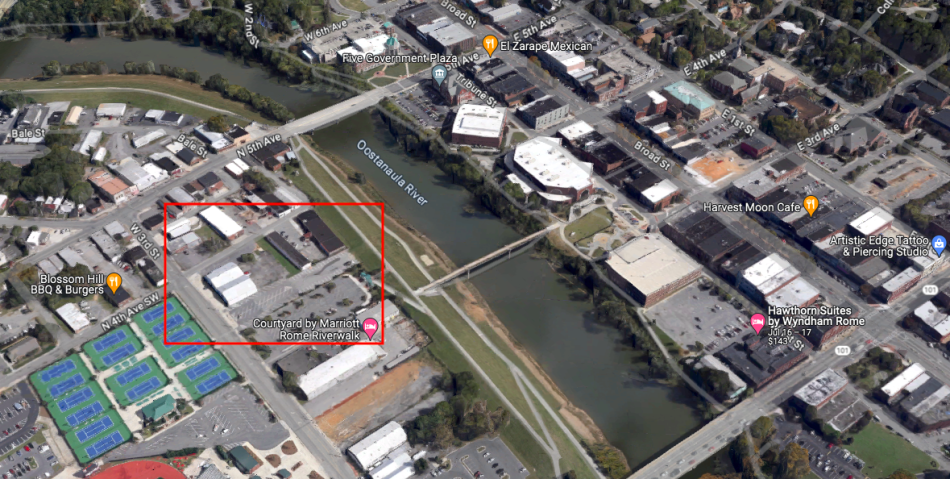
Approximation of the Nova River District site, shown before the hotel was constructed next door. Google Maps
The development team also includes Poole and Poole Architecture, True North Companies (general contractor), Focus Design Interiors, Davis and Church (structural engineer), Phillips Gradick Engineering, and Dovetail Civil Design. Gallery residential is on board to handle property management once the district opens.
Pinnacle Financial Partners and Commerce One Bank closed a $37 million construction loan to build Nova River District last spring.
Swing up to the gallery for more visuals and context—no interstate driving required.
…
Follow us on social media:
Twitter / Facebook/and now: Instagram
• OTP news, discussion (Urbanize Atlanta)

Northwest of Atlanta, new riverside district gears up for opening
Josh Green
Mon, 02/10/2025 – 15:23
As part of a years-long push to activate a large, underused section of its downtown along the Oostanaula River, the historic northwest Georgia city of Rome is gearing up to welcome a mixed-use project that could inject new life. Investment firm CCI Real Estate announced today pre-leasing has begun on Nova River District, a new mixed-use venture situated along riverbanks in the Floyd County city’s charming central business district. First move-ins at the 250-unit residential portion are scheduled for July, according to CCI reps. Pricing for studios starts from $900, while the largest two-bedroom options are seeking $1,400 monthly and up. (We’ve asked for square footages and will post that info should it come.) The project is taking shape next to a new hotel, the Courtyard by Marriott Rome Riverwalk, that’s considered the first phase of an assemblage of properties for development the city’s been putting together for years, in hopes of better activating the riverfront.
Fresh rendering depicting greenspaces and pathways at Nova River District. Courtesy of CCI Real Estate
Sample interior at the new 250-unit project in Rome. Courtesy of CCI Real Estate
Sited on 6.4 acres between the hotel and Fifth Avenue, the Nova River District will also see roughly 14,000 square feet of retail at its base.Two original buildings on the property are being remade into an additional 4,000 square feet of adaptive-reuse retail space, all near a public pedestrian bridge that spans the river. Another Nova River District facet calls for 1 acre of public greenspace, with a link to the 16.7-mile AdventHealth ECO Greenway.The broader goal is to add to the vibrancy of Rome’s Historic Broad Street on the other side of the river. Beyond downtown walkability, perks of the Nova River District apartments include a heated saltwater pool, fitness and wellness studio, onsite coffee shop, courtyards, and two “elevated sundecks,” per project officials. “We look forward to welcoming residents… and introducing new experiences and energy to this special part of Rome, complementing what this community has already built over generations,” said Jeff Warwick, CEO at CCI, in a statement. “With walking trails, local eateries, and history at every turn, Rome creates an atmosphere that is unlike anywhere else in the state.”
Courtesy of CCI Real Estate
Approximation of the Nova River District site, shown before the hotel was constructed next door. Google Maps
The development team also includes Poole and Poole Architecture, True North Companies (general contractor), Focus Design Interiors, Davis and Church (structural engineer), Phillips Gradick Engineering, and Dovetail Civil Design. Gallery residential is on board to handle property management once the district opens.Pinnacle Financial Partners and Commerce One Bank closed a $37 million construction loan to build Nova River District last spring.Swing up to the gallery for more visuals and context—no interstate driving required. …Follow us on social media: Twitter / Facebook/and now: Instagram • OTP news, discussion (Urbanize Atlanta)
Tags
338 W. 3rd St.
Nova River District
Rome
OTP
Oostanaula River
Rome Floyd Chamber of Commerce
CRE IMPACT River Arts District
CCI Real Estate
Mixed-Use Development
Suburban Atlanta
Atlanta Suburbs
Rome Downtown Development Authority
Pinnacle Financial Partners
Commerce
Poole & Poole Architecture
True North Companies
Focus Design Interiors
Davis & Church
Phillips Gradick Engineering
Dovetail Civil Design
Gallery residential (39857
Adaptive Reuse
Adaptive-Reuse
Adaptive-Reuse Development
Floyd County
AdventHealth ECO Greenway
Images
Approximation of the Nova River District site, shown before the hotel was constructed next door. Google Maps
Fresh rendering depicting greenspaces and pathways at Nova River District. Courtesy of CCI Real Estate
Courtesy of CCI Real Estate
Range of floorplan rental options at Nova River District’s initial phase. Courtesy of CCI Real Estate
Sample interior at the new 250-unit project in Rome. Courtesy of CCI Real Estate
Courtesy of CCI Real Estate
Courtesy of CCI Real Estate
The project’s location among Rome’s rivers, situated about 65 miles northwest of Midtown.Google Maps
An earlier rendering depicting Nova River District’s multifamily component. Courtesy of CRE IMPACT River Arts District
Subtitle
Pre-leasing has begun at Nova River District in charming downtown Rome
Neighborhood
OTP
Background Image
Image
Before/After Images
Sponsored Post
Off Read More
Northwest of Atlanta, new riverside district gears up for opening
Josh Green
Mon, 02/10/2025 – 15:23
As part of a years-long push to activate a large, underused section of its downtown along the Oostanaula River, the historic northwest Georgia city of Rome is gearing up to welcome a mixed-use project that could inject new life. Investment firm CCI Real Estate announced today pre-leasing has begun on Nova River District, a new mixed-use venture situated along riverbanks in the Floyd County city’s charming central business district. First move-ins at the 250-unit residential portion are scheduled for July, according to CCI reps. Pricing for studios starts from $900, while the largest two-bedroom options are seeking $1,400 monthly and up. (We’ve asked for square footages and will post that info should it come.) The project is taking shape next to a new hotel, the Courtyard by Marriott Rome Riverwalk, that’s considered the first phase of an assemblage of properties for development the city’s been putting together for years, in hopes of better activating the riverfront.
Fresh rendering depicting greenspaces and pathways at Nova River District. Courtesy of CCI Real Estate
Sample interior at the new 250-unit project in Rome. Courtesy of CCI Real Estate
Sited on 6.4 acres between the hotel and Fifth Avenue, the Nova River District will also see roughly 14,000 square feet of retail at its base.Two original buildings on the property are being remade into an additional 4,000 square feet of adaptive-reuse retail space, all near a public pedestrian bridge that spans the river. Another Nova River District facet calls for 1 acre of public greenspace, with a link to the 16.7-mile AdventHealth ECO Greenway.The broader goal is to add to the vibrancy of Rome’s Historic Broad Street on the other side of the river. Beyond downtown walkability, perks of the Nova River District apartments include a heated saltwater pool, fitness and wellness studio, onsite coffee shop, courtyards, and two “elevated sundecks,” per project officials. “We look forward to welcoming residents… and introducing new experiences and energy to this special part of Rome, complementing what this community has already built over generations,” said Jeff Warwick, CEO at CCI, in a statement. “With walking trails, local eateries, and history at every turn, Rome creates an atmosphere that is unlike anywhere else in the state.”
Courtesy of CCI Real Estate
Approximation of the Nova River District site, shown before the hotel was constructed next door. Google Maps
The development team also includes Poole and Poole Architecture, True North Companies (general contractor), Focus Design Interiors, Davis and Church (structural engineer), Phillips Gradick Engineering, and Dovetail Civil Design. Gallery residential is on board to handle property management once the district opens.Pinnacle Financial Partners and Commerce One Bank closed a $37 million construction loan to build Nova River District last spring.Swing up to the gallery for more visuals and context—no interstate driving required. …Follow us on social media: Twitter / Facebook/and now: Instagram • OTP news, discussion (Urbanize Atlanta)
Tags
338 W. 3rd St.
Nova River District
Rome
OTP
Oostanaula River
Rome Floyd Chamber of Commerce
CRE IMPACT River Arts District
CCI Real Estate
Mixed-Use Development
Suburban Atlanta
Atlanta Suburbs
Rome Downtown Development Authority
Pinnacle Financial Partners
Commerce
Poole & Poole Architecture
True North Companies
Focus Design Interiors
Davis & Church
Phillips Gradick Engineering
Dovetail Civil Design
Gallery residential (39857
Adaptive Reuse
Adaptive-Reuse
Adaptive-Reuse Development
Floyd County
AdventHealth ECO Greenway
Images
Approximation of the Nova River District site, shown before the hotel was constructed next door. Google Maps
Fresh rendering depicting greenspaces and pathways at Nova River District. Courtesy of CCI Real Estate
Courtesy of CCI Real Estate
Range of floorplan rental options at Nova River District’s initial phase. Courtesy of CCI Real Estate
Sample interior at the new 250-unit project in Rome. Courtesy of CCI Real Estate
Courtesy of CCI Real Estate
Courtesy of CCI Real Estate
The project’s location among Rome’s rivers, situated about 65 miles northwest of Midtown.Google Maps
An earlier rendering depicting Nova River District’s multifamily component. Courtesy of CRE IMPACT River Arts District
Subtitle
Pre-leasing has begun at Nova River District in charming downtown Rome
Neighborhood
OTP
Background Image
Image
Before/After Images
Sponsored Post
Off
Images: Controversial, affordable Reynoldstown project rounds into shape
Images: Controversial, affordable Reynoldstown project rounds into shape
Images: Controversial, affordable Reynoldstown project rounds into shape
Josh Green
Mon, 02/10/2025 – 13:39
Once a lightning rod for controversy, a Reynoldstown development that city leaders have said will provide deeply affordable, quality, and safe new living options for unhoused Atlantans along a main intown thoroughfare is rounding into shape.
Having replaced a vacant, single-family home on a corner lot in Reynoldstown, Stryant Investments’ 111 Moreland Ave. residential project is creating 42 apartments for currently homeless occupants, with exterior work nearing completion. It stands three-stories tall where Moreland and Kirkwood avenues meet, with a small, seven-space surface parking lot planned behind it.
Stan Sugarman, Stryant managing partner, tells Urbanize Atlanta the goal is to open the complex in October as part of Atlanta Mayor Andre Dickens’ initiative to end homelessness in the city.
Prior to breaking ground, the project drew pushback from some neighbors and leadership group the Reynoldstown Civic Improvement League, who argued a building with 42 units was too dense for the .38-acre site. The RCIL voted 79-16 against the project two years ago.
As Atlanta Civic Circle reported in September 2023, as the groundbreaking drew near, city officials worked with Stryant to tweak the number of kitchens and communal spaces around the property to improve it for residents, but without at least 42 apartments, the project would not have been financially viable, per its builders.

How the 42-unit development has taken shape where a single home once stood at 111 Moreland Ave. in Reynoldstown. Josh Green/Urbanize Atlanta
Sugarman said units will be reserved for residents earning at max 30 percent of the Area Median Income, which translates to just over $20,000. Atlanta Housing plans to supply rent vouchers, and no resident will be asked to pay more than 30 percent of their monthly income. Others who aren’t employed will not be required to pay rent, officials have said.
A typical apartment at 111 Moreland Ave. will see three or four bedrooms and bathrooms and kitchenettes, with a central laundry facility, kitchen, and lounge on each floor.
Other components will include a picnic area, bike storage, and energy-efficient appliances, according to Stryant.
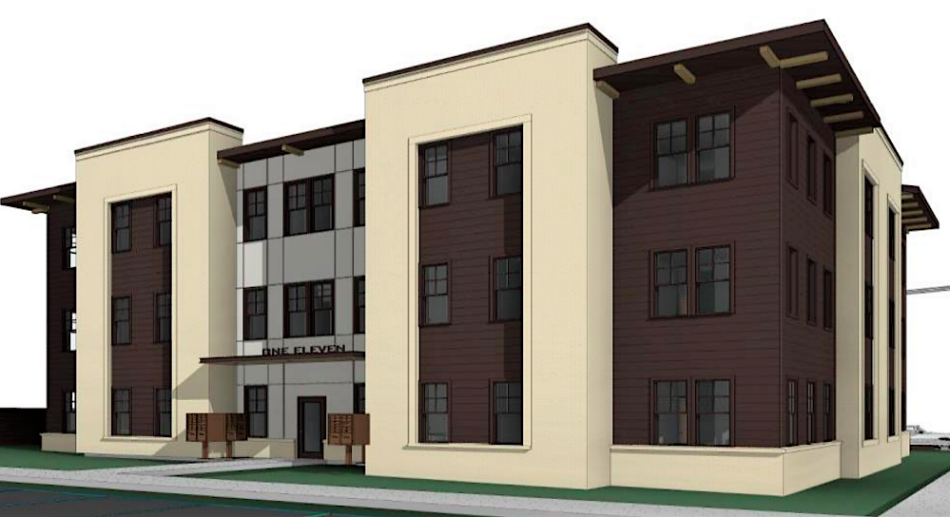
Plans for the 42-unit project’s Moreland Avenue facade. McMillan Pazdan Smith Architecture/ Stryant Investments
Stryant is leaning on construction loans and grants from Invest Atlanta’s Housing Opportunity Fund, the U.S. Department of Housing and Urban Development, Federal Home Loan Banks, and homeless services provider Partners for Home to see the project through.
Officials have said Partners for Home will select the 42 residents who will occupy the building, come this fall. Support services will also be supplied by that agency.
Find more context and images for the 111 Moreland Ave. project in the gallery above.
…
Follow us on social media:
Twitter / Facebook/and now: Instagram
• Reynoldstown news, discussion (Urbanize Atlanta)
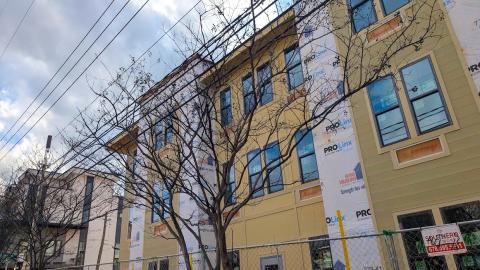
Images: Controversial, affordable Reynoldstown project rounds into shape
Josh Green
Mon, 02/10/2025 – 13:39
Once a lightning rod for controversy, a Reynoldstown development that city leaders have said will provide deeply affordable, quality, and safe new living options for unhoused Atlantans along a main intown thoroughfare is rounding into shape. Having replaced a vacant, single-family home on a corner lot in Reynoldstown, Stryant Investments’ 111 Moreland Ave. residential project is creating 42 apartments for currently homeless occupants, with exterior work nearing completion. It stands three-stories tall where Moreland and Kirkwood avenues meet, with a small, seven-space surface parking lot planned behind it. Stan Sugarman, Stryant managing partner, tells Urbanize Atlanta the goal is to open the complex in October as part of Atlanta Mayor Andre Dickens’ initiative to end homelessness in the city. Prior to breaking ground, the project drew pushback from some neighbors and leadership group the Reynoldstown Civic Improvement League, who argued a building with 42 units was too dense for the .38-acre site. The RCIL voted 79-16 against the project two years ago. As Atlanta Civic Circle reported in September 2023, as the groundbreaking drew near, city officials worked with Stryant to tweak the number of kitchens and communal spaces around the property to improve it for residents, but without at least 42 apartments, the project would not have been financially viable, per its builders.
How the 42-unit development has taken shape where a single home once stood at 111 Moreland Ave. in Reynoldstown. Josh Green/Urbanize Atlanta
The 111 Moreland Ave. site in relation to Reynoldstown (left) and Edgewood landmarks. Google Maps
Sugarman said units will be reserved for residents earning at max 30 percent of the Area Median Income, which translates to just over $20,000. Atlanta Housing plans to supply rent vouchers, and no resident will be asked to pay more than 30 percent of their monthly income. Others who aren’t employed will not be required to pay rent, officials have said. A typical apartment at 111 Moreland Ave. will see three or four bedrooms and bathrooms and kitchenettes, with a central laundry facility, kitchen, and lounge on each floor. Other components will include a picnic area, bike storage, and energy-efficient appliances, according to Stryant.
Where Moreland Avenue frontage stands today. Josh Green/Urbanize Atlanta
Plans for the 42-unit project’s Moreland Avenue facade. McMillan Pazdan Smith Architecture/ Stryant Investments
Stryant is leaning on construction loans and grants from Invest Atlanta’s Housing Opportunity Fund, the U.S. Department of Housing and Urban Development, Federal Home Loan Banks, and homeless services provider Partners for Home to see the project through. Officials have said Partners for Home will select the 42 residents who will occupy the building, come this fall. Support services will also be supplied by that agency. Find more context and images for the 111 Moreland Ave. project in the gallery above. …Follow us on social media: Twitter / Facebook/and now: Instagram • Reynoldstown news, discussion (Urbanize Atlanta)
Tags
111 Moreland Ave. SE
Stryant Investments
McMillan Pazdan Smith Architecture
Office of Zoning and Development
Reynoldstown Civic Improvement League
Stryant
Stryant Construction
Stan Sugarman
Affordable Housing
affordable housing
Atlanta Homeless
Atlanta Homelessness
Unhoused People
Atlanta Development
Atlanta Construction
Workforce Housing
Atlanta Mayor Andre Dickens
Mayor Andre Dickens
Images
The 111 Moreland Ave. site in relation to Reynoldstown (left) and Edgewood landmarks. Google Maps
The site’s vacant, single-family predecessor, as shown in early 2020. Google Maps
How the 42-unit development has taken shape where a single home once stood at 111 Moreland Ave. in Reynoldstown. Josh Green/Urbanize Atlanta
The Stryant project’s Kirkwood Avenue frontage today, facing south. Josh Green/Urbanize Atlanta
The building’s positioning where Kirkwood Avenue meets Moreland Avenue. Josh Green/Urbanize Atlanta
Plans for the 42-unit project’s Moreland Avenue facade. McMillan Pazdan Smith Architecture/ Stryant Investments
Site plan for the .38-acre property. McMillan Pazdan Smith Architecture/ Stryant Investments
McMillan Pazdan Smith Architecture/ Stryant Investments
Breakdown of floorplans at 111 Moreland Ave. McMillan Pazdan Smith Architecture/ Stryant Investments
Where Moreland Avenue frontage stands today. Josh Green/Urbanize Atlanta
Subtitle
Topped-out Moreland Avenue development part of city’s effort to address homelessness
Neighborhood
Reynoldstown
Background Image
Image
Before/After Images
Sponsored Post
Off Read More
Images: Controversial, affordable Reynoldstown project rounds into shape
Josh Green
Mon, 02/10/2025 – 13:39
Once a lightning rod for controversy, a Reynoldstown development that city leaders have said will provide deeply affordable, quality, and safe new living options for unhoused Atlantans along a main intown thoroughfare is rounding into shape. Having replaced a vacant, single-family home on a corner lot in Reynoldstown, Stryant Investments’ 111 Moreland Ave. residential project is creating 42 apartments for currently homeless occupants, with exterior work nearing completion. It stands three-stories tall where Moreland and Kirkwood avenues meet, with a small, seven-space surface parking lot planned behind it. Stan Sugarman, Stryant managing partner, tells Urbanize Atlanta the goal is to open the complex in October as part of Atlanta Mayor Andre Dickens’ initiative to end homelessness in the city. Prior to breaking ground, the project drew pushback from some neighbors and leadership group the Reynoldstown Civic Improvement League, who argued a building with 42 units was too dense for the .38-acre site. The RCIL voted 79-16 against the project two years ago. As Atlanta Civic Circle reported in September 2023, as the groundbreaking drew near, city officials worked with Stryant to tweak the number of kitchens and communal spaces around the property to improve it for residents, but without at least 42 apartments, the project would not have been financially viable, per its builders.
How the 42-unit development has taken shape where a single home once stood at 111 Moreland Ave. in Reynoldstown. Josh Green/Urbanize Atlanta
The 111 Moreland Ave. site in relation to Reynoldstown (left) and Edgewood landmarks. Google Maps
Sugarman said units will be reserved for residents earning at max 30 percent of the Area Median Income, which translates to just over $20,000. Atlanta Housing plans to supply rent vouchers, and no resident will be asked to pay more than 30 percent of their monthly income. Others who aren’t employed will not be required to pay rent, officials have said. A typical apartment at 111 Moreland Ave. will see three or four bedrooms and bathrooms and kitchenettes, with a central laundry facility, kitchen, and lounge on each floor. Other components will include a picnic area, bike storage, and energy-efficient appliances, according to Stryant.
Where Moreland Avenue frontage stands today. Josh Green/Urbanize Atlanta
Plans for the 42-unit project’s Moreland Avenue facade. McMillan Pazdan Smith Architecture/ Stryant Investments
Stryant is leaning on construction loans and grants from Invest Atlanta’s Housing Opportunity Fund, the U.S. Department of Housing and Urban Development, Federal Home Loan Banks, and homeless services provider Partners for Home to see the project through. Officials have said Partners for Home will select the 42 residents who will occupy the building, come this fall. Support services will also be supplied by that agency. Find more context and images for the 111 Moreland Ave. project in the gallery above. …Follow us on social media: Twitter / Facebook/and now: Instagram • Reynoldstown news, discussion (Urbanize Atlanta)
Tags
111 Moreland Ave. SE
Stryant Investments
McMillan Pazdan Smith Architecture
Office of Zoning and Development
Reynoldstown Civic Improvement League
Stryant
Stryant Construction
Stan Sugarman
Affordable Housing
affordable housing
Atlanta Homeless
Atlanta Homelessness
Unhoused People
Atlanta Development
Atlanta Construction
Workforce Housing
Atlanta Mayor Andre Dickens
Mayor Andre Dickens
Images
The 111 Moreland Ave. site in relation to Reynoldstown (left) and Edgewood landmarks. Google Maps
The site’s vacant, single-family predecessor, as shown in early 2020. Google Maps
How the 42-unit development has taken shape where a single home once stood at 111 Moreland Ave. in Reynoldstown. Josh Green/Urbanize Atlanta
The Stryant project’s Kirkwood Avenue frontage today, facing south. Josh Green/Urbanize Atlanta
The building’s positioning where Kirkwood Avenue meets Moreland Avenue. Josh Green/Urbanize Atlanta
Plans for the 42-unit project’s Moreland Avenue facade. McMillan Pazdan Smith Architecture/ Stryant Investments
Site plan for the .38-acre property. McMillan Pazdan Smith Architecture/ Stryant Investments
McMillan Pazdan Smith Architecture/ Stryant Investments
Breakdown of floorplans at 111 Moreland Ave. McMillan Pazdan Smith Architecture/ Stryant Investments
Where Moreland Avenue frontage stands today. Josh Green/Urbanize Atlanta
Subtitle
Topped-out Moreland Avenue development part of city’s effort to address homelessness
Neighborhood
Reynoldstown
Background Image
Image
Before/After Images
Sponsored Post
Off
Freyr Battery has deal to sell Coweta County property
Freyr Battery has deal to sell Coweta County property
Coweta County in recent months has been the target of data center developers and homebuilders.
Coweta County in recent months has been the target of data center developers and homebuilders. Read MoreBizjournals.com Feed (2022-04-02 21:43:57)
Coweta County in recent months has been the target of data center developers and homebuilders.
Freyr Battery has deal to sell Coweta County property
Freyr Battery has deal to sell Coweta County property
Coweta County in recent months has been the target of data center developers and homebuilders.
Coweta County in recent months has been the target of data center developers and homebuilders. Read MoreBizjournals.com Feed (2019-09-06 17:16:48)
Coweta County in recent months has been the target of data center developers and homebuilders.
Atlanta Ranks Among Nation’s Leaders in Office-to-Apartment Conversions
Atlanta Ranks Among Nation’s Leaders in Office-to-Apartment Conversions

According to a recent RentCafe/Yardi Matrix report, the Atlanta metropolitan area will see 2,239 spaces come to life through office-to-apartment conversion projects, which make up 56% of all adaptive reuse projects underway. That is the sixth most in the country. Boasting a 57% year-over-year increase in office conversions, Atlanta has emerged as a key player in the adaptive reuse landscape. However, only 14.2 million square feet worth of office buildings (6% of the metro’s total office inventory) are deemed suitable for future office-to-apartment conversions. A notable project is the transformation of the building at 2 Peachtree St., which is expected to create at least 200 new apartments within its 890,000 square feet of space.
New York is the leader with 8,310 units, followed by Washington, DC, Los Angeles, Chicago Dallas and Atlanta.
The post Atlanta Ranks Among Nation’s Leaders in Office-to-Apartment Conversions appeared first on Connect CRE.
According to a recent RentCafe/Yardi Matrix report, the Atlanta metropolitan area will see 2,239 spaces come to life through office-to-apartment conversion projects, which make up 56% of all adaptive reuse projects underway. That is the sixth most in the country. Boasting a 57% year-over-year increase in office conversions, Atlanta has emerged as a key player in the …
The post Atlanta Ranks Among Nation’s Leaders in Office-to-Apartment Conversions appeared first on Connect CRE. Read MoreAtlanta & Southeast Commercial Real Estate News
According to a recent RentCafe/Yardi Matrix report, the Atlanta metropolitan area will see 2,239 spaces come to life through office-to-apartment conversion projects, which make up 56% of all adaptive reuse projects underway. That is the sixth most in the country. Boasting a 57% year-over-year increase in office conversions, Atlanta has emerged as a key player in the …
The post Atlanta Ranks Among Nation’s Leaders in Office-to-Apartment Conversions appeared first on Connect CRE.
Pfizer Unloads Durham R&D Facility
Pfizer Unloads Durham R&D Facility

Pfizer sold its flex building at the Imperial Center in Durham to Lightstone Group for $41.1 million. The property is at 1219 Shiloh Glenn Drive, between Research Triangle Park and the Raleigh-Durham International Airport. The Class B building is 82,054 square feet and sits on 15.69 acres. It is a cGMP building with multi-product production spaces, supporting workspaces, analytical labs and fully redundant building systems.
The Triad Business Journal reports in early 2023, Pfizer began looking to offload the Durham facility as part of a shift in the company’s research and development strategy. By the end of 2023, the company confirmed plans to shut down operations at the site and another facility in Morrisville, which Pfizer does not own. The closures were part of a companywide cost-cutting effort.
Cushman and Wakefield represented Pfizer in the recent sale.
The Lightstone Group owns 33 industrial and life sciences properties totaling 1 million square feet across 27 states.
The post Pfizer Unloads Durham R&D Facility appeared first on Connect CRE.
Pfizer sold its flex building at the Imperial Center in Durham to Lightstone Group for $41.1 million. The property is at 1219 Shiloh Glenn Drive, between Research Triangle Park and the Raleigh-Durham International Airport. The Class B building is 82,054 square feet and sits on 15.69 acres. It is a cGMP building with multi-product production …
The post Pfizer Unloads Durham R&D Facility appeared first on Connect CRE. Read MoreAtlanta & Southeast Commercial Real Estate News
Pfizer sold its flex building at the Imperial Center in Durham to Lightstone Group for $41.1 million. The property is at 1219 Shiloh Glenn Drive, between Research Triangle Park and the Raleigh-Durham International Airport. The Class B building is 82,054 square feet and sits on 15.69 acres. It is a cGMP building with multi-product production …
The post Pfizer Unloads Durham R&D Facility appeared first on Connect CRE.

